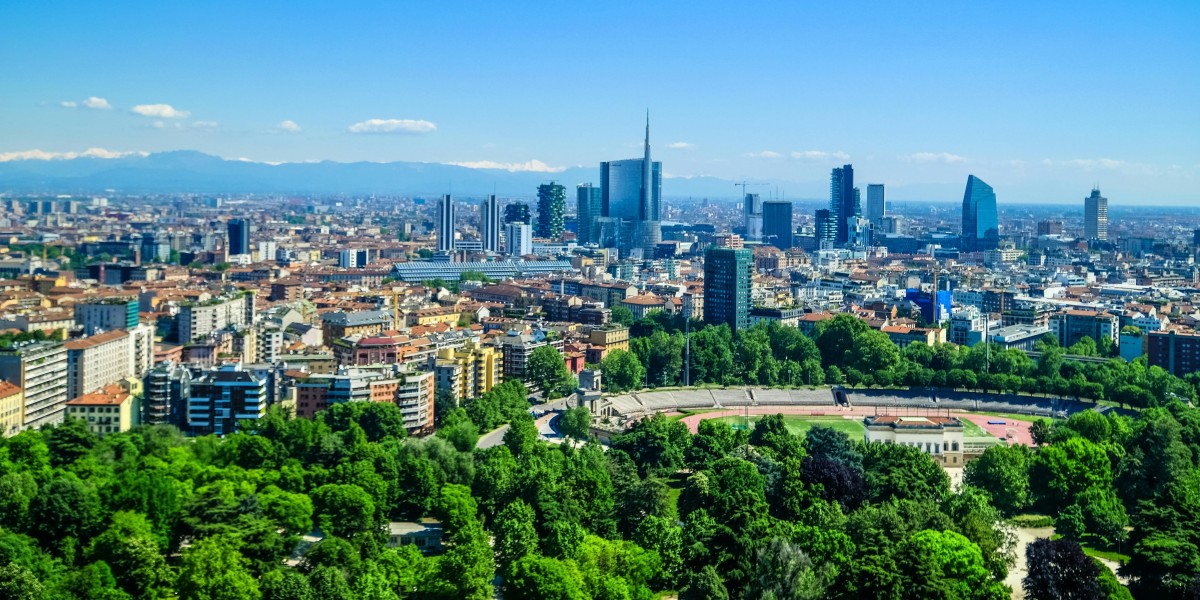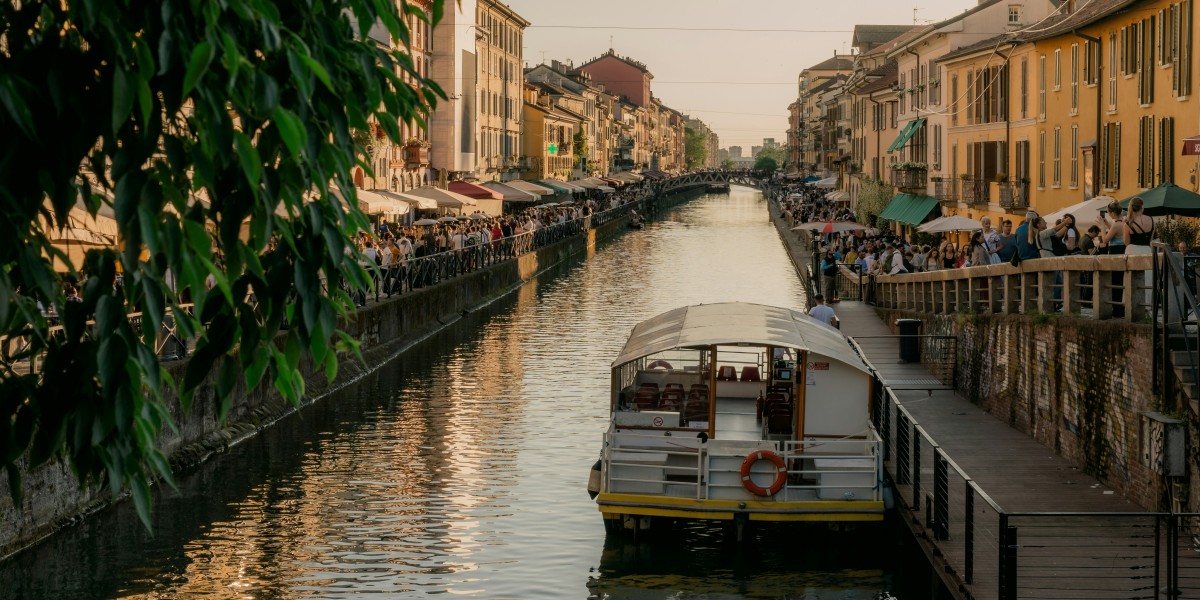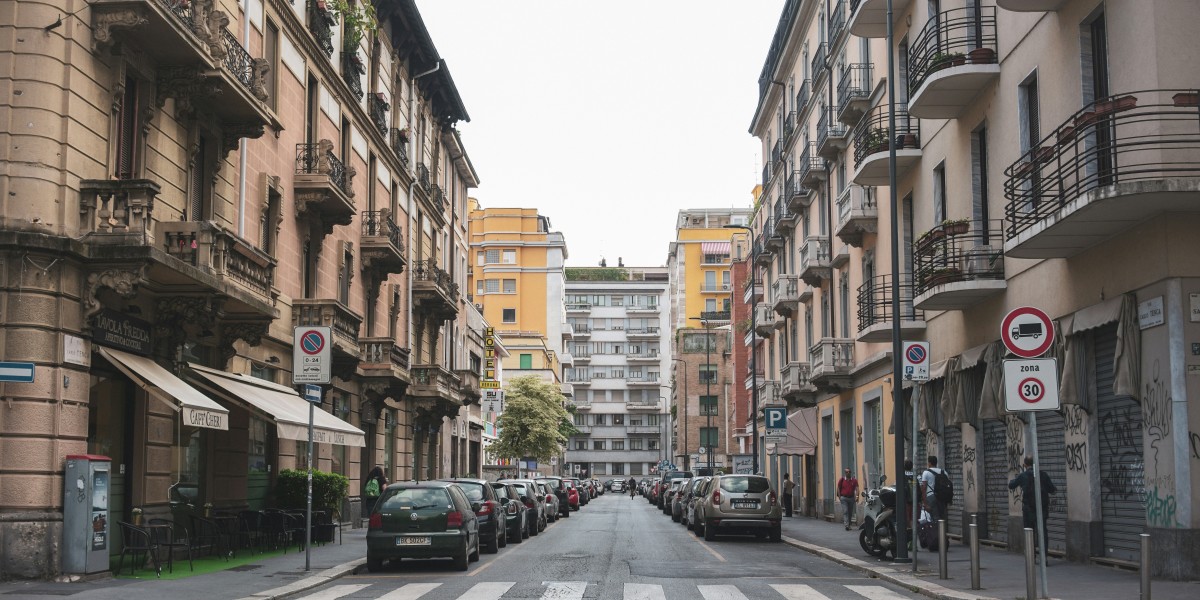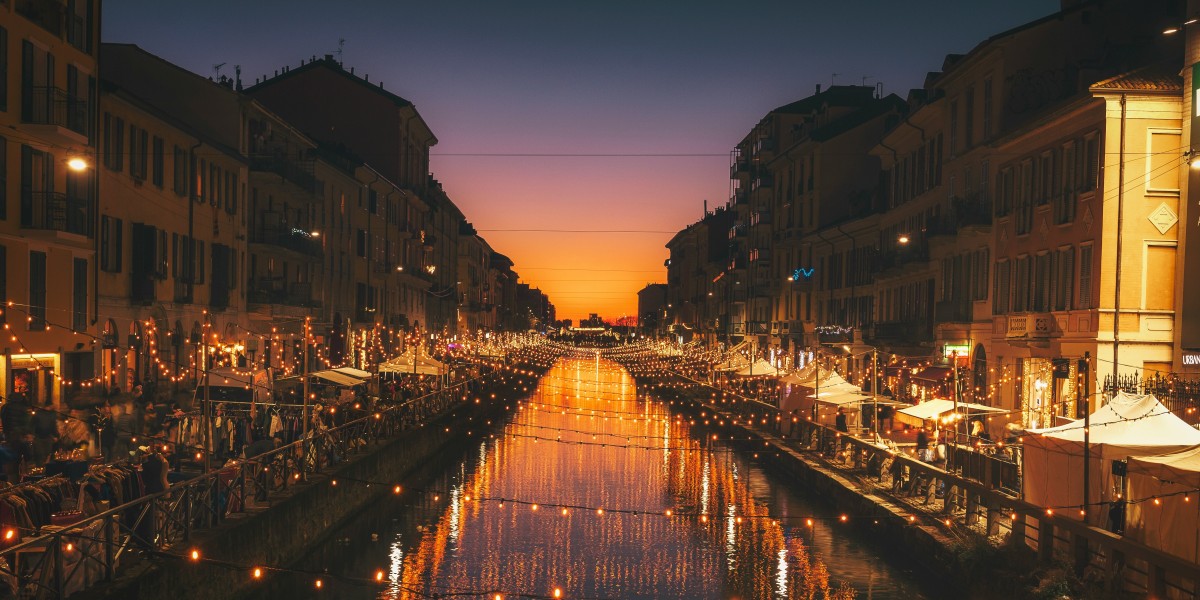
Milan is Italy’s lively economic, fashion, and cultural capital, set in the heart of the Lombardy region. The city attracts expats from all over the globe, drawn by its international work environment, world-class education, dynamic food scene, and iconic events like Fashion Week. With neighbourhoods ranging from the stately historic centre to contemporary design hubs, Milan offers a distinct urban energy for professionals, students, and young families.
- What is Milan like?
- Is Milan a good place to live?
- Living in Milan: pros and cons
- Is Milan expensive to live?
- Renting in Milan
- Property for sale in Milan
- Best places to live in Milan
- Living in Milan as a student
- Living in Milan as an expat
- Living in Milan with kids
- Living in Milan vs. Rome
- Live like a local in Milan
What is Milan like?

Set against a backdrop of striking architectural contrasts, Milan blends medieval cathedrals with modern skyscrapers. Its historical side shines through the Duomo di Milano cathedral, the Sforza Castle, and classic tramlines. Yet, the gleaming towers of Porta Nuova and the buzz of designer boutiques point to the city’s future-facing attitude.
Highlights such as the lush Parco Sempione, the Navigli canal networks, and the Brera art district all add local colour. Visitors and new arrivals often comment on the city’s fast pace, hard-working ethos, and the lively yet businesslike energy that sets Milan apart from other Italian cities.
Is Milan a good place to live?
Milan promises a high standard of living: it’s safe, walkable, and packed with cultural events, from opera nights at Teatro alla Scala to bustling food markets. The city has efficient emergency services, clear public signage, and neighbourhoods that remain active late into the evening. It is known for its reliable transport, excellent healthcare options, and rich social calendar—including everything from art exhibitions to Serie A football matches.
While the cost of living is higher than in many other Italian cities, the range of professional opportunities, diversity of international cuisine, and access to famed local dishes like risotto alla milanese continue to be a draw. A sense of order and ambition is strong, but pockets of green and a vibrant aperitivo culture balance out the daily hustle.
Living in Milan: pros and cons

When thinking about a move to Milan, it's helpful to look at both the positives and the potential downsides. Weighing these factors can give you a clearer picture of what life in the city might be like.
Living in a city like Milan certainly has advantages:
- Career and education opportunities: Milan is a magnet for skilled professionals and students. Top-ranked universities such as Bocconi University and Politecnico di Milano are here, as are the Italian headquarters of many global brands.
- Cultural and social life: The city’s calendar is full, with events like Milan Fashion Week, Salone del Mobile (Design Week), and regular concerts at Teatro alla Scala. Local socialise over aperitivo, as well as there's great nightlife in areas like Navigli.
- Transport and accessibility: Milan’s metro, trams, and buses provide quick links across the city.
However, like all places, there are drawbacks:
- High living costs: Housing and eating out push up expenses, and central apartments are competitive and often pricey.
- Pace and attitude: The city’s forward momentum suits some, but others might miss the more relaxed or warm-hearted feel of other Italian cities. The frenetic urban buzz may not suit everyone.
Is Milan expensive to live?

Understanding the cost of living in Milan is essential before taking the leap. Day-to-day expenses can be higher than in other Italian regions, but the city delivers a diverse range of services and experiences that many find rewarding.
In Milan, residents manage a delicate balance between everyday costs and a high quality of life. Enjoying a meal out at a mid-range restaurant for two generally costs about €80, offering everything from hearty Lombard classics to global flavours.
Grabbing a cappuccino at a local café is part of daily life, usually around €1.80. Getting around is both convenient and affordable, with monthly public transport passes priced at €39. Daily essentials like utilities for a typical apartment come to around €197 per month, while reliable high-speed internet costs about €27 per month.
To live comfortably solo, a net monthly salary of €2,000–2,500 is advisable, especially if you prefer a central neighbourhood.
Renting in Milan
With high demand, Milan’s rental market can be competitive but varied. In the historic centre and luxury districts like Brera or CityLife, apartments fetch premium prices, while areas a bit further out still offer good value and reliable connections to the heart of the city.
According to recent rent prices in Milan, expect to pay on average €36.1 per m2 for central apartments (about €2,166 per month for a 60m2 flat), and about €19 per m2 in outer districts.
Property for sale in Milan
For those considering buying, property prices in Milan are also among the highest in Italy, at €5,073 per m2, reflecting both local demand and growing interest in luxury homes in Milan.
Best places to live in Milan

From old-world neighbourhoods in the centre to up-and-coming districts on the city’s edge, Milan offers a patchwork of living options. International families gravitate towards districts with international schools and parks, while young professionals often prefer edgier, creative areas. Expats with a taste for style find plenty to explore among the city’s most exclusive enclaves—some of the most expensive neighbourhoods in Milan are famed for their elegance, shopping, and gourmet dining.
Brera
The artistic heart of the city, featuring the renowned Pinacoteca di Brera gallery, Brera botanical gardens, and cobbled streets lined with cafés, design shops and independent bookstores. A favourite among creatives, international professionals, and couples, Brera is lively year-round thanks to its gallery openings and fashionable events.
Navigli
This canal-side area is known for its vibrant nightlife, frequent flea markets, and a photogenic stretch of water lined with bars and trattorias. Bazar del Naviglio Grande is a popular market for antique lovers, while MUDEC – Museo delle Culture hosts exhibitions and workshops. Students and young professionals love Navigli for its energetic, multicultural crowd.
Porta Romana
A laid-back but central district, Porta Romana is home to the thermal spas QC Termemilano, indie cinemas, plus local trattorias serving up classic Milanese grub. This neighbourhood appeals to families, working professionals, and those who want proximity to downtown with a quieter feel.
Isola
Once industrial, Isola now buzzes with urban cool. Piazza Gae Aulenti, the futuristic Bosco Verticale residential towers, and the innovative Blue Note Jazz Club are defining landmarks. It’s a magnet for start-up founders, freelancers, and design aficionados.
Porta Venezia
Known for its multicultural shops, LGBTQIA+ friendly venues like LeccoMilano, proximity to Indro Montanelli public gardens, and a thriving Ethiopian food scene. It’s youthful, diverse, and well-connected by metro.
CityLife
Defined by its modern skyline, CityLife boasts luxury apartments, high-end shopping at the CityLife Shopping District, landscaped public parks, and art installations. An international crowd is drawn to this area’s facilities and architectural style.
Living in Milan as a student

With institutions like Università degli Studi di Milano, Bocconi University and Politecnico di Milano, Milan draws students from across the globe. The city is packed with affordable places to eat, lively student bars such as Colibrì, and annual student nights held at venues around Colonne di San Lorenzo. Discounted public transport and a good range of student housing make it a practical choice, though securing an affordable flat can require persistence.
Living in Milan as an expat
The expat community in Milan is extensive and well-connected. Many join local chapters of InterNations, which hosts meetups and networking events, or the Milan Expats Facebook group for everything from job tips to social gatherings. The International Women’s Association of Milan is active in charity and cultural work, and business hubs like Talent Garden and coworking spaces in Isola cater to entrepreneurs and remote workers. Thanks to the strong international community here, living in Milan as a foreigner is not a lonely experience.
Is it ok to speak English in Milan?
English is widely spoken in major companies, high-end shops, and by younger locals. Weekly language exchange meetups, like Milan English/Italian Language Exchange, are popular for making friends and practising Italian.
However, learning Italian in Italy is one of the best ways to make friends and get the most from your experience. Language schools like Scuola Leonardo da Vinci and student-run conversation exchanges are especially popular. Having a basic grasp of the language is useful for public offices and social integration.
Living in Milan with kids
Parents find Milan relatively family-friendly, with plenty of international schools, such as the American School of Milan and the British School of Milan, for kids to go to if you prefer your child to study in an English-speaking environment. English-speaking private paediatricians, and activities like coding classes for kids at CoderDojo Milan are also available.
The city’s green areas and canals provide space for playdates and weekend picnics, while cultural sceneries—Teatro Nazionale for musicals, or Museo Nazionale della Scienza e della Tecnologia—keep kids entertained. Expats with families also appreciate networks such as Mothers of Milan for swapping advice, recommendations, and arranging meetups.
Living in Milan vs. Rome
Living in Rome is a popular choice for those who love the capital’s historic grandeur, relaxed pace, and Mediterranean vibe. Milan, on the other hand, attracts those seeking career growth, reliable public transport, and a strong international network. The social scene is more business-oriented but equally rewarding. Both cities offer distinct lifestyles, so choosing depends on your priorities. Living in Rome is a popular choice for those who want to experience a different rhythm of Italian city life and want to live in a sunnier, warmer climate.
Live like a local in Milan

Set between Gothic cathedrals and glass skyscrapers, Milan presses forward with businesslike efficiency, yet still finds space for leisurely lunches in leafy courtyards and lazy afternoons along the canals. To truly live like a Milanese, make the aperitivo in Navigli a regular ritual, pick up fresh produce at Mercato di Via Fauche, spend Sundays cycling to Parco Portello, and check out local football matches at San Siro Stadium.
New arrivals often benefit from joining Meetup clubs, language exchanges, and even volunteering with international charities like Fondazione Progetto Arca.
Following Milanese traditions—like the Oh Bej! Oh Bej! Christmas market—will help you settle in quickly.
Eating like a local
On the food front, Milan is celebrated for its risotto alla milanese and cotoletta alla milanese. The much-loved Luini near the Duomo is known for its panzerotti, while Trattoria Torre di Pisa attracts locals for its Tuscan-inspired fare. Don’t miss the buzzing cosmopolitan eateries in Porta Venezia, Nottingham Forest, for innovative cocktails and Miscusi for casual, fresh pasta.
